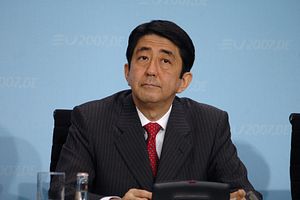2015 promises to be an exciting year in Japanese politics: Japanese Prime Minister Shinzo Abe just pledged to embark on an ambitious legislative agenda to stimulate economic growth through deregulation and market reforms. In a policy statement last Thursday, Abe told parliament, “The point is, we either do or don’t… What is demanded of us in the current Diet is to push through reforms.” Structural reforms – the third arrow of Abenomics – will focus on dismantling regulations in agriculture, healthcare and other sectors.
Abe knows exactly how difficult this will be. He even drew attention to that fact in his speech — Abe directly told Hiroshige Seko, the deputy chief cabinet secretary who compiled the speech, to include the expression “most drastic reforms since the end of World War II.” The word “reforms” (kaikaku) was repeated 36 times in the speech.
This emphasis on reforms is informed by Abe’s past failure. The first time Abe was in power, from September 2006 to September 2007, he was accused of being obsessed with his conservative agenda of a “Beautiful Japan,” and being out of touch with the more mundane, economic concerns of the people. Abe will not make the same mistake twice; he is personally committed to cultivating his image as someone who can sympathize with the people’s need for economic growth.
Emphasizing reform is not only good policy, but also smart politics. It is unlikely that Abe will face a challenge to his leadership of the Liberal Democratic Party (LDP) in the September election for party presidency, as Abe led the ruling party to victory in the past three elections: House of Representatives (lower house) elections in December 2012 and December 2014, plus a House of Councillors (upper house) election in July 2013. However, Abe’s continued success depends on his ability to deliver an economic recovery.
Abe must also guard his flank from those who oppose his “pet projects,” including security reforms and constitutional aspirations. Many Japanese, including the LDP’s junior coalition partner the Komeito Party, still feel ambivalent about these goals. Therefore Abe mentioned these security issues in his speech but shied away from any elaboration. New security legislation will be submitted to the Diet this spring after negotiations between the LDP and Komeito and unified local government elections. Constitutional amendment is unlikely to be an issue until after upper house elections next summer. Abe also did not delve into the statement he will make upon the 70th anniversary of Japan’s defeat in WWII.
After a series of weak prime ministers since Koizumi Junichiro (2001-06), including Abe himself, Abe’s greatest asset is his image as a “strong” prime minister. After the hostage crisis, his Cabinet’s approval rating went up to 50 percent for the first time since March 2014 – a typical case of rally-round-the-flag syndrome, but also a potent reminder that the Japanese people are more likely to crave a “strong” leader in times of such international uncertainty. Fighting entrenched interests and striking against “bedrock” regulations domestically will help burnish this image and maintain his popularity, even as he deals with more controversial security issues at the same time.
So what does Abe hope to accomplish in the “most drastic reforms since the end of World War II”?
Abe seeks to cut red tape in economic activities, beginning with a deal with Japan Agriculture (JA) to weaken the Central Union of Agricultural Cooperatives (JA-Zenchu). The new arrangement will allow local units to be more innovative and experimental, hopefully leading to greater efficiency and productivity.
In health care, Abe urged legislation to expand patients’ ability to use both national-insurance-approved treatment options and out-of-pocket options.
Labor reforms would ease rules on working hours as well as make compensation for high-skilled workers commensurate with achievements rather than hours.
Other issue areas critical to Japan’s economic recovery are the restart of nuclear power plants as well as women’s participation in society and greater measures to deal with poverty among children. The successful conclusion of the U.S.-led Trans-Pacific Partnership (TPP) would also be a powerful impetus for greater domestic reforms.
At the same time as implementing these reforms, Abe must also grapple with Japan’s public finances and social security programs. He promised that “the three targets of economic revitalization, fiscal rehabilitation, and social security reform will be attained simultaneously.” However, it is unclear how these costs will be borne by the Japanese society. Japan’s national debt rose to 12 trillion yen in 2014 despite low interest rates, and the central government does not yet have a comprehensive plan to deal with the problem. Furthermore, social security expenditures have been increasing by about 1 trillion yen annually – a significant challenge to Japan’s fiscal soundness.

































